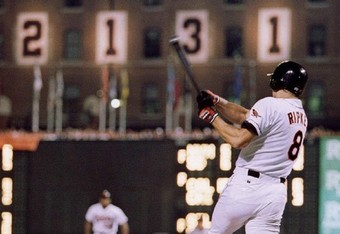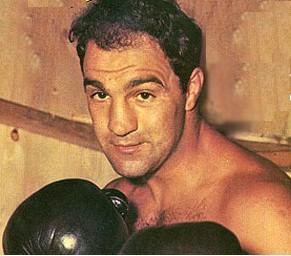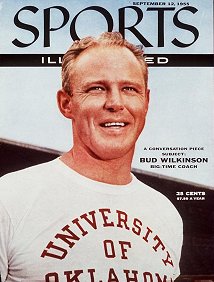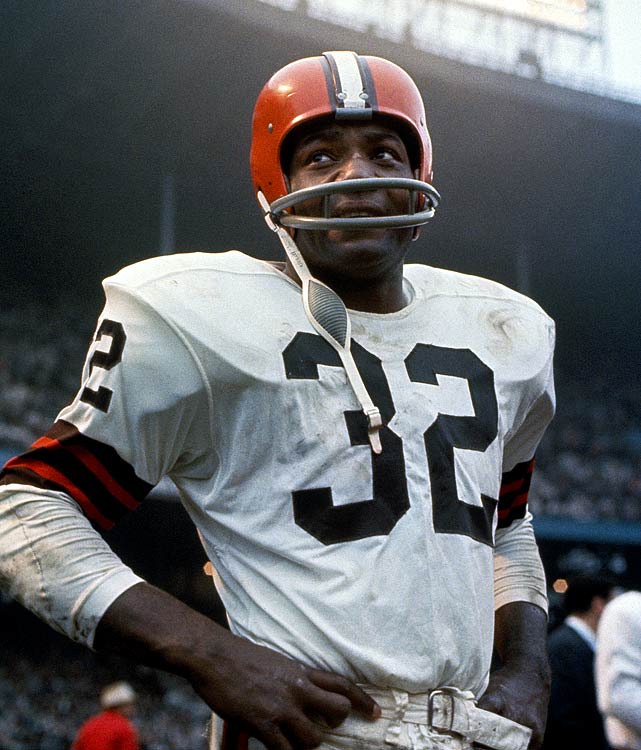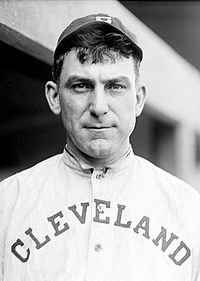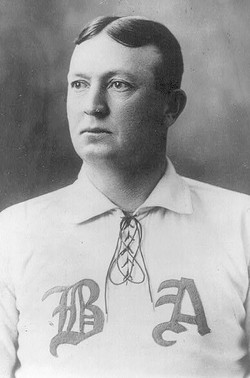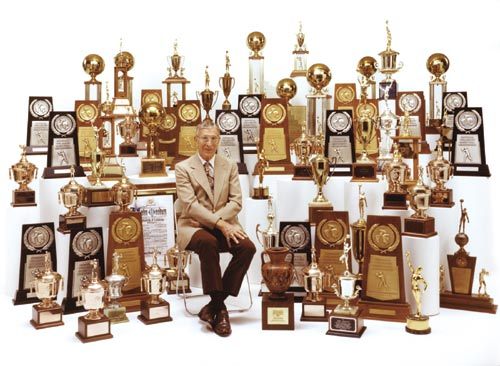
The 50 Most “Unbreakable” Records in Sports : 20-16
For an introduction to the list, click here.
To read previous posts, click the numbers: 50-46 , 45-41 , 40-36 , 35-31 , 30-26 , 25-21
——————————
20. Oklahoma wins 47 consecutive Division I football games
Oklahoma’s 47-game winning streak lasted from 1953 into 1957. It bested the previous record (39) by eight games, and contained three consecutive undefeated seasons and two national championships (’55, ’56).
Coach Bud Wilkinson’s teams averaged almost a 29-point margin of victory over the streak and recorded 23 shutouts. Only 20 of the 47 wins came at home in Norman. Most top teams today play a 2-to-1 home-to-away ratio.
OU only played in two bowl games (’53 and ’55), both being Orange Bowl victories. Thus, they won the ’56 National Championship without playing in a bowl game.
The last lost before the streak was to Notre Dame in 1953 (they tied Pitt in the next game, so the unbeaten streak is actually 48). The loss that ended the streak in 1957? To Notre Dame. They defeated them 40-0 in 1956 in Wilkinson’s only career victory over the Irish.
Non-AQ teams (like TCU & Boise St) are most likely to approach the record because of a relatively weak schedule strength. But even they would require back-to-back undefeated seasons plus an additional 19 victories. With changing rosters, increasing parity, and media pressure, not to mention looming possibilities of superconferences and a playoff, this win streak will never be broken.
–Joey Sparks
———————————
19. Jim Brown leads the NFL in rushing for 8 seasons
While not a huge number, Jim Brown’s 8 rushing titles is a feat that is truly amazing. Consider this: only five players in NFL history (Steve Van Buren, O.J. Simpson, Barry Sanders, and Eric Dickerson) have led the league in rushing for four seasons, and Brown led the league in rushing five seasons in a row.
Since 1997, only two runners–Edgerrin James and LaDanian Tomlinson–have led the league as many as two times.
What makes Brown’s record even more amazing is what so many people who lived during his era continue to talk about. That is, Jim Brown probably could have played several more years, and he retired at a high level, meaning he could have won the rushing crown more than 8 times. He actually won the rushing title in his final year in the league (1965) before walking away from the game.
There are many great running backs in the game, but that is part of the reason this record will stand. Also, with offenses being more spread around (using multiple formations, more wide receivers and receiving tight ends), and with specialized running backs (goal-line backs, 3rd-down backs, etc.), this is a record that will stand.
——————————-
18. Napolean Lajoie’s single-season batting average record
In my lifetimes, no one has ever hit .400 in a single Major League season. In fact, few have come that close . In 1994, Tony Gwynn hit .394, and that’s as close as anyone I can remember in my lifetime.
Hitting .400 has become “the standard” for achievements. So, imagine leaving .400 in your rearview mirror. That’s what Napolean Lajoie (pronounced la-jew-ae) did in 1901 when he set the standard that has only been approached a couple of times. In that year, the second baseman hit .429 for the Philadelphia A’s. [Oddly, he was then traded to Cleveland and is more remembered for his time with that team.] Only Rogers Hornsby’s .424 in 1924 has ever been in the same area of Lajoie’s record.
Some might say, “Well, Gwynn hit .394, so it’s not too out of the realm of possibility to reach the record.” .394 is an amazing batting average, but it is still 35 percentage points lower than the record! This is an untouchable achievement.
Footnote: There is one season in organized American professional baseball that was better. In 1887, Tip O’Neill of the St. Louis Browns hit .434. However, the record was in the American Association, not the Major Leagues.
Amazing: The year that Lajoie hit .429, he was 86 percentage points higher than any other American League hitter!
——————————–
17. Cy Young throws 749 career complete games
Folks, read that again: 749 complete games. Obviously, Young pitched in a different era, but this number is still astounding, even by that era’s standards. He has 103 more complete games than any other pitcher in history and only 7 pitchers in history have as many as 500.
One of the amazing things about this record is that it shows Cy Young’s longevity. You see, Young is not in the top 20 of single-season complete games, but he dwarfs everyone else, due to his longevity and reliability.
How likely is this record to be broken? There is a zero-percent chance. The leader among active pitchers coming into the 2011 MLB season was Roy Halladay. “Doc” needed a few more complete games to reach Young. How many? He was only 683 complete games behind, with a total of 66.
Specialized pitching and high salaries (making managers fearful of hurting a pitcher) will keep this record in tact forever.
——————————–
16. John Wooden wins 10 NCAA championships in men’s basketball
It’s easy to dismiss this record a little, due to the lack of parity in the 1960s and 70s in basketball, and due to the NCAA tournament containing fewer rounds then than it does now. However, we need to keep in mind that Coach Wooden won these 10 titles in a span of just 12 seasons!
The reasons listed above show us why this is a record that will stand forever. As great as some modern-day coaches (Mike Krzyzewski, Jim Calhoun, Roy Williams and others) are, the active leaders only have four titles–less than half of Wooden’s amazing total. We would laud a coach if he ever got to five in the modern era of basketball.
The main reason for this record being safe is the length of the NCAA tournament. As the field continues to expand, a team needs to win 6 (or 7) games now to win a title. Couple that with immense media pressure surrounding the event and upsets and terrible games happen, even to very good teams. Wooden’s 10 titles may be passed in basketball by women’s coaches (Pat Summitt and Geno Auriemma might both pass it if health allows), but it will never be touched in men’s hoops.
